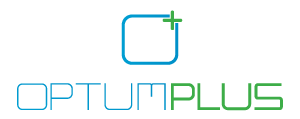Photo credit: Getty Images
Recently, I visited the website of O'Brien & Gere, as somebody who I know, joined their NY office and on reading the story about the firm, I was drawn to the statement by John Fox the CEO: “We’ve never been a company that’s just about ‘the next big project,’ which is why I think we’ve been successful for so long”.
This statement is something we at Optum+ do connect with readily. We’ve never been a company that’s just about ‘the next big project’, we ask and seek out how can we add value to our client and their projects. It has made us an unique, boutique type Project Delivery services firm who add value by being a client advocate and problem solving during project delivery to create an enhancing client experience.
Most firms struggle with value-add as their focus is to bring in volume of work /projects. The other struggle with value -add is the focus on process and achieving KPIs. The only way to add value is to move your focus on the client, their needs, their issues and resolving it for them and adding value and creating client experience.
Brian Solis indicates in his book “X: The Experience when Business Meets Design on the importance of experience design and the role it will play in business today. It is imperative to go beyond focusing on building products and services and focus on enhancing client experience to create the most valuable relationships. The success of implementing a customer /client/ user experience is linking the customer experience to value - value created through the understanding of their need and crafting a truly enhanced customer experience. Value driven customer experience is the new competitive advantage.
“Be different by providing a distinctive experience for customers / clients where the organization must unite around the goal of meeting the clients /customer true needs.”
There was time when business was not personal, it was “business”. Today business is personal as we are trying to build a relationship with our customers. Building relationship starts with an understanding what people want and then making sure they get that. Colin Shaw in his post - Get Personal, It’s Business! – explains further – “It also means getting to know them well enough to discern what they want (as well as what they don’t). Neither of these things happens while discussing business, but instead by making an effort to connect on a personal level.”
The more we work to solve our clients’ problems the more valuable we can be to our clients and they in turn to their clients. The key is to get to know the client and their needs and the issues. This can be achieved only through evolving collaboration with client and thus building strong relationship. The key to building strong relationships is to stay for the long haul, starting with the marketing and sales process and into project delivery.
At IBM, Phil Gilbert is leading the company in the "design thinking" way, an approach to business that identifies users’ needs as a starting point and works toward the product. IBM’s Design-Centered Strategy to Set Free the Squares
We must see the world of business from the customer / client perspective. Perspective is key in creating value. The customer’s ultimate satisfaction or dis-satisfaction will arise from the person’s impression over the course of an end-to-end journey. It is important than the individual touchpoints along this end-to-end journey must create value.
Our method of engaging clients is chained to the past. We need to move forward into the future by creating collaborative value networks as customers and client have changed. They have changed geographically and across the globe. Our clients have changed in a global environment where rapid advancement of technology and new business models have been introduced and business disruption is the new normal and society and technology growing at a faster pace than organisation and corporation can adapt.
Our clients through social media are already informed of the services and products they require and are now looking for value and customer experience in the services and products they require. Their paths to purchase have changed. In the old approach the customer was at the bottom of the chain. In the new approach of creating collaborative value networks, our focus is the customer and the customer / client is the centre point. The focus on the client /customer will encourage collaboration and dialogue leading to redefining of services and products.
Changing to a collaborative value networks means removing the traditional constraint in our business and the way we engage and work with our clients. Not changing is not an option anymore. If organisations do not change the consequence is stark. Organisation who understand value creation and craft client experience and change, will in the long term end up with organisations that are more adaptable and agile business creating trust and transparency with their clients.
The question is – Can we afford not to change? I would like to hear from you.
Philip Thomas is Optimizing Project Delivery Services; Workplace Experience Strategist; Design & Circular Thinking at Optum+.
Sparking conversation on “Disrupting the AEC Industry” and “The Untethered Workplace”.
I’m thrilled to announce that I’ll be presenting on February 15, 2017 on “Disrupting the AEC Industry” and on February 16, 2017 on “The Untethered Workplace” at the upcoming BUILDEX Vancouver conference!
This is Western Canada’s largest event for the Construction, Renovation, Architecture, Interior Design and Property Management industries with 14,000 attendees attending each year.
This event is held at the Vancouver Convention Centre West where I’ll be joining other speakers who are all committed to employing the best practices and keeping up with the trends in their industries. You can visit www.buildexvancouver.com for more info.
Hope to see you there!


